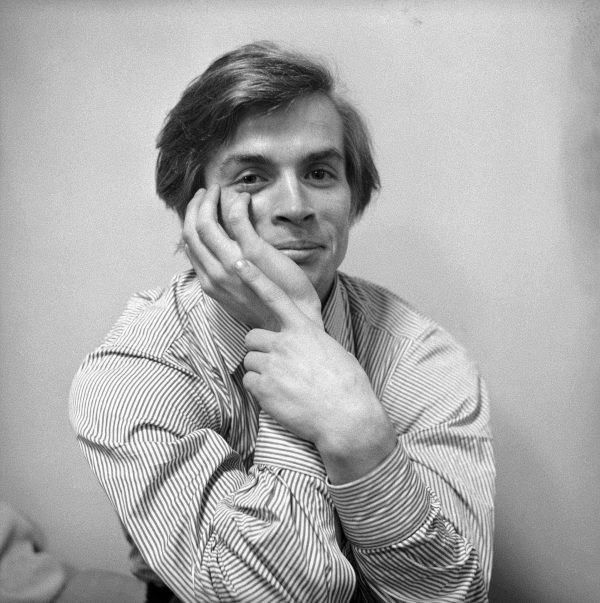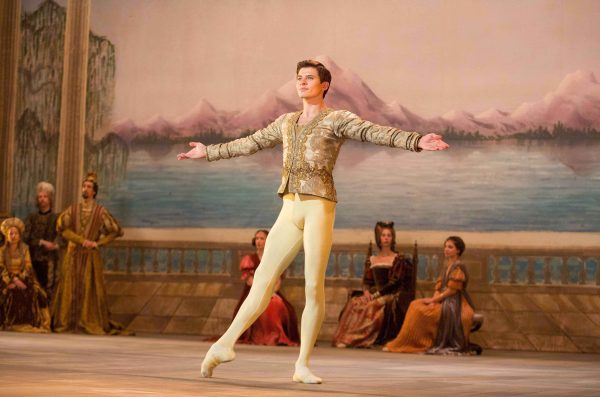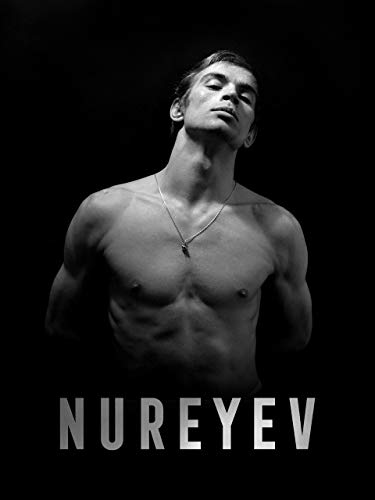Rudolf Nureyev is considered one of the greatest ballet dancers of all time. He made headlines when he defected from the Soviet Union, at the Paris airport while touring with the Kirov Ballet in 1961, during the Cold War.
The intriguing story of his early life, and what lead him to this crucial moment, is told in the movie The White Crow, to be released in theaters on April 26. A new documentary, simply titled Nureyev, will be out on April 19.

“White Crow” is an idiom used to describe a person who is unusual, extraordinary, not like others, an outsider. The film, based on the 2007 biography by Julie Kavanagh, Rudolf Nureyev: The Life, is written by playwright David Hare and directed by Ralph Fiennes, who also plays Alexander Pushkin, Nureyev’s mentor and teacher at the Leningrad Choreography School (now Vaganova Academy of Russian Ballet).
Fiennes, who had directed and starred in a movie about Charles Dickens, The Invisible Woman (2013), says, “I was gripped by the story of his youth in Ufa in central Russia in the 1940s, his student years studying dance in Leningrad (now Saint Petersburg), culminating in his decision to defect to the West in 1961.”

Born on a Trans-Siberian train in 1938, Nureyev grew up with three older sisters in a poor Tatar family of Mongolian Muslims. The film shows him as an adorable child learning to dance from a Bakshir folk teacher; as a teenager of 17, accepted at the Bolshoi Ballet school in Moscow, demanding to attend the superior school in St. Petersburg; 3 years later in 1958 spitting on the floor when ordered to return to his small hometown after graduation; then getting enlisted by prima ballerina Natalia Dudinskaya of the Kirov Ballet (now Mariinsky) to be her partner. A large portion of the film takes place in Paris, where the uneducated 23-year-old Russian visits the Louvre to admire paintings like “The Raft of Medusa” by Théodore Géricault and befriends sophisticated Parisians.
Hare says about Nureyev, “He was a working class peasant, worried that he started dancing very late. He felt that the male part in classical Soviet ballet was boring. Traditionally, the man stood there and took up heroic poses, while around him this beautiful girl would dance. It was a merging of sexuality and of gender that happened with Nureyev, there is an employment of the feminine that is creatively rich and much more expressive.”
Nureyev is played by Ukrainian dancer Oleg Ivenko, 28, from the Tatar State Ballet Theater. He says: “The energy he emanated was incredibly powerful, everybody felt it, all his partners sensed it was something extraordinary. He was inspired to achieve by paintings, art, books and people. It was all connected in him.”

After his defection to the West, Nureyev’s career took off. In 1962, he danced with legendary ballerina Margot Fonteyn in Giselle at the Royal Ballet in London, and they formed a long-lasting partnership. He met and fell in love with esteemed Danish dancer Erik Bruhn. They remained close until his death in 1986. In 1975, he performed in the modern ballet Lucifer by Martha Graham. He was director/choreographer of the Paris Opera Ballet from 1983 to 1989. He played silent movie star Rudolph Valentino in Valentino (1977) directed by Ken Russell. Diagnosed with HIV in 1984, Nureyev died of complications from AIDS in 1993.
Jacqui Morris, co-director of the documentary Nureyev, describes him as “This gorgeous, tempestuous Russian peasant, who danced like an angel. Dance, unlike most other art forms, is ephemeral. Our responsibility was to save Nureyev for future generations, by tracking down the best of his work that survives on film, and then present it in the context of his time.”
In Los Angeles The White Crow plays at the Landmark, Nureyev at the Laemmle Royal and Music Hall. We encourage you to discover the moving and fascinating story of this great artist. For more info see the website of the Rudolph Nureyev Foundation.
